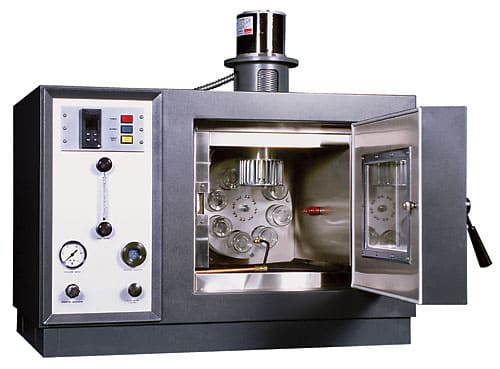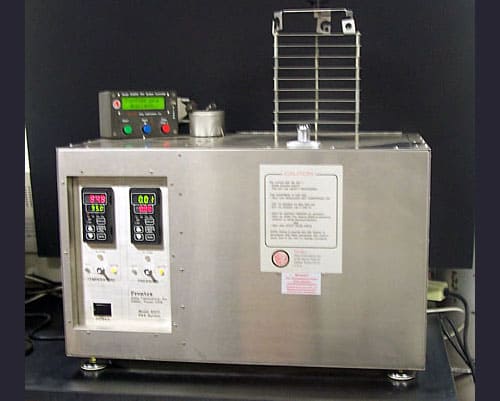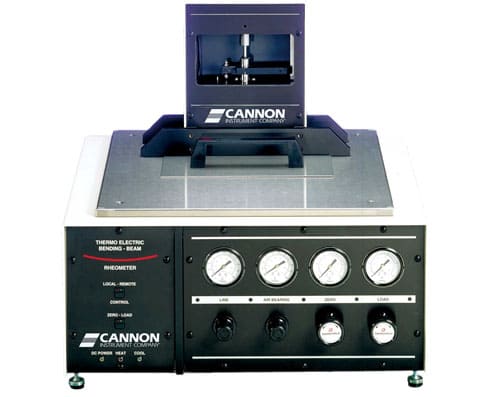Overview
In terms of characterization of bitumen binder for use in HMA pavements, penetration grading and viscosity grading are somewhat limited. So, as part of the Superpave research effort, new binder tests and specifications were developed in order to more accurately and fully characterize bitumen binders for use in HMA pavements. In addition to addressing rutting and fatigue cracking, these specifications are tailored to address the performance parameters of HMA pavements.
Performance grading (PG) of Superpave bitumen binders is based on the idea that their properties should be related to the conditions under which they are used. For bitumen binders, this includes climatic conditions and aging considerations. Accordingly, the PG system uses a common battery of tests, but specifies that a particular bitumen binder must pass these tests at specific temperatures based on the climate in the area of application.
Superpave performance grading uses the following bitumen binder tests:

Rolling Thin-Film Oven (RTFO) provides simulated short-term aged bitumen binder for testing physical properties. To simulate manufacturing and placement aging, bitumen binder is exposed to elevated temperatures. In addition, the RTFO provides a quantitative measure of volatiles lost during the aging process.
RTFO takes unaged bitumen samples in cylindrical glass bottles and places them in an oven on a rotating carriage. While the samples are aging at 325°F (163°C) for 85 minutes, the carriage rotates within the oven. After that, samples are stored for use in physical properties tests or the PAV.
The standard Rolling Thin-Film Oven test is: AASHTO T 240 and ASTM D 2872. Effect of Heat and Air on a Moving Film of Asphalt (Rolling Thin-Film Oven Test)

A Pressure Aging Vessel (PAV) simulates long-term aging of bitumen binder in order to test its physical properties. Bitumen binder is exposed to heat and pressure to simulate in-service aging over a period of 7 to 10 years.
The PAV procedure involves placing RTFO aged bitumen binder samples in stainless steel pans, and then aging them for 20 hours in a vessel pressurized to 305 psi (2.10 MPa or 20.7 atmospheres). The samples are then stored for use in testing their physical properties.
The standard Pressure Aging Vessel procedure is found in: AASHTO R 28: Accelerated Aging of Asphalt Binder Using a Pressurized Aging Vessel (PAV)

A Rotational Viscometer (RV) is used to measure the viscosity of bitumen binders at high temperatures during manufacturing and construction. Superpave PG asphalt binder specification uses this measurement. The RV test can be conducted at different temperatures, but since manufacturing and construction temperatures tend to be similar regardless of climate, the test for Superpave PG asphalt binder specification is always conducted at 275°F (135°C).
RV tests determine whether the bitumen binder is sufficiently fluid for pumping and mixing. RV tests measure the torque required to maintain a constant rotational speed (20 RPM) of a cylindrical spindle while submerged in a bitumen binder at a constant temperature. The RV converts this torque to a viscosity and displays it automatically.
The standard Rotational Viscometer procedure is found in: AASHTO T 316 and ASTM D 4402: Viscosity Determination of Asphalt Binder Using Rotational Viscometer.

DSRs are used to characterize the viscous and elastic behavior of bitumen binders at medium to high temperatures. The Superpave PG bitumen binder specification uses this characterization. For Superpave binder tests, the actual temperatures anticipated in the area where the bitumen binder will be placed determine the test temperatures.
During the basic DSR test, a thin bitumen binder sample is sandwiched between two circular plates. Shearing occurs when the upper plate oscillates back and forth across the sample at a rate of 10 rad/sec (1.59 Hz). Bitumen binder samples are subjected to DSR tests on unaged, RTFO-aged, and PAV-aged samples. The tests are mostly controlled by software.
The standard dynamic shear rheometer test is: AASHTO T 315: Determining the Rheological Properties of Asphalt Binder Using a Dynamic Shear Rheometer (DSR)

The Bending Beam Rheometer (BBR) test measures the low temperature stiffness and relaxation characteristics of bitumen binders. These parameters indicate a bitumen binder's ability to resist low temperature cracking. BBR and DTT are used together to determine the low temperature PG grade of a bitumen binder. As with other Superpave binder tests, the test temperatures are determined by the actual temperatures expected where the bitumen binder will be applied.
A small bitumen beam is supported in a cold liquid bath and immersed in the BBR test. The deflection of the beam is measured against time as a load is applied to its center. Based on measured deflection and standard beam properties, stiffness is calculated. A measure of how the bitumen binder relaxes the load-induced stresses is also calculated. PAV aged asphalt binder samples are tested for BBR. Much of the test is controlled by software.
The standard BBR test is: AASHTO T 313: Determining the Flexural Creep Stiffness of Asphalt Binder Using the Bending Beam Rheometer (BBR)
The Superpave PG binder specification involving the BBR is: AASHTO PP 42: Determination of Low-Temperature Performance Grade (PG) of Asphalt Binders

The Direct Tension Tester (DTT) measures the stiffness and relaxation properties of asphalt binders at low temperatures. An asphalt binder's ability to resist cracking at low temperatures is determined by these parameters. When combined with the BBR, the DTT can be used to determine an asphalt binder's low temperature performance grade. As with other Superpave binder tests, the actual temperatures expected in the area where the asphalt binder will be placed determine the test temperatures.
Under a constant rate of elongation, a specimen of asphalt binder is pulled apart and the stress and strain at failure is measured. Temperatures are chosen so that the failure will occur from fractures of brittle or brittle-ductile materials. Temperatures exceeding 30°C can cause ductile failure of the specimen (stretching without breaking). PAV aged asphalt binder samples are used for DTT tests. The testing is largely controlled by software.
The standard DTT test is: AASHTO T 314: Determining the Fracture Properties of Asphalt Binder in Direct Tension (DT)
The Superpave PG binder specification involving the DTT is: AASHTO PP 42: Determination of Low-Temperature Performance Grade (PG) of Asphalt Binders
| Equipment | Purpose | Performance Parameter | Testing Procedure | Price Range (Rs) |
|---|---|---|---|---|
| Rolling Thin Film Oven (RTFO) | Simulate binder aging during HMA production and construction | Resistance to aging during construction | AASHTO T240 ASTM D2872 | 4,00,000 - 4,50,000 |
| Pressure Aging Vessel (PAV) | Simulate binder aging during HMA service life | Resistance to aging during service life (5- 10 years) | AASHTO PP1 | 6,00,000 – 7,50,000 |
| Rotational Viscometer (RV) | Measure binder properties at high construction temperatures | Handling and pumping | ASTM D4402 AASHTO TP48 | 2,50,000 – 2,75,500 |
| Dynamic Shear Rheometer (DSR) | Measure binder properties at high and intermediate temperatures | Resistance to permanent deformation (rutting) and fatigue cracking | AASHTO TP5 | 15,00,000 – 17,50,000 (Specification Version) |
| Bending Beam Rheometer (BBR) | Measure binder properties at low service temperatures | Resistance to thermal cracking | AASHTO TP1 | 10,00,000 – 12,50,000 |
| Direct Tension Tester (DTT) | Measure binder properties at low service temperatures | Resistance to thermal cracking | AASHTO TP3 | 25,00,000 -27,25,000 |
